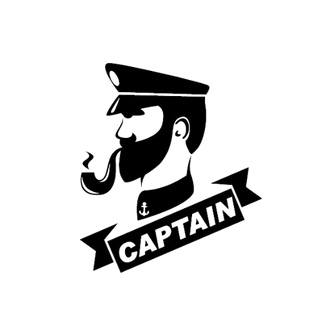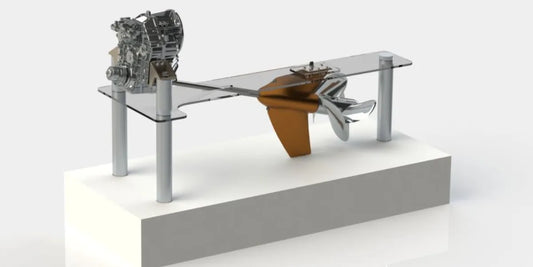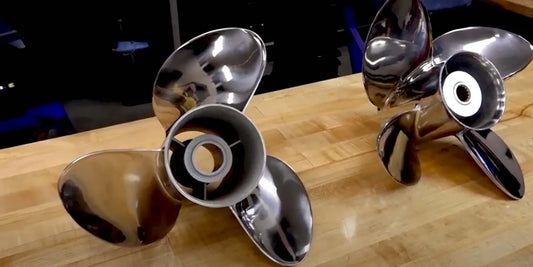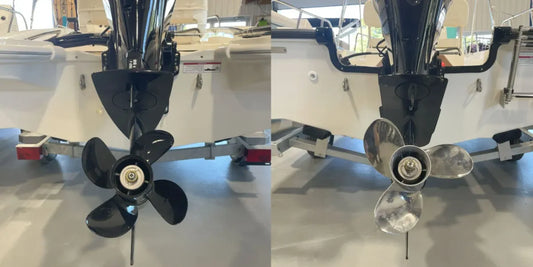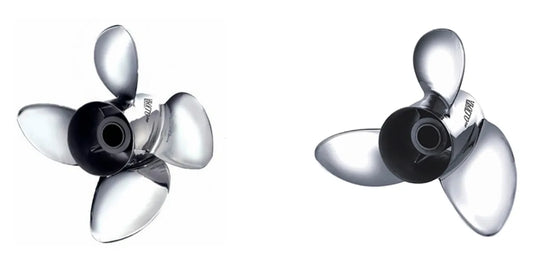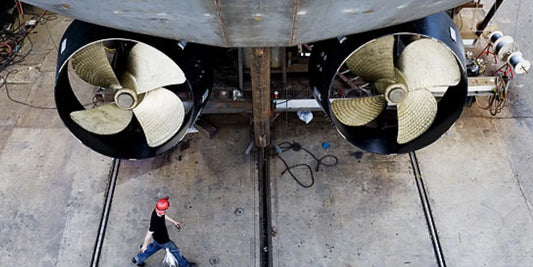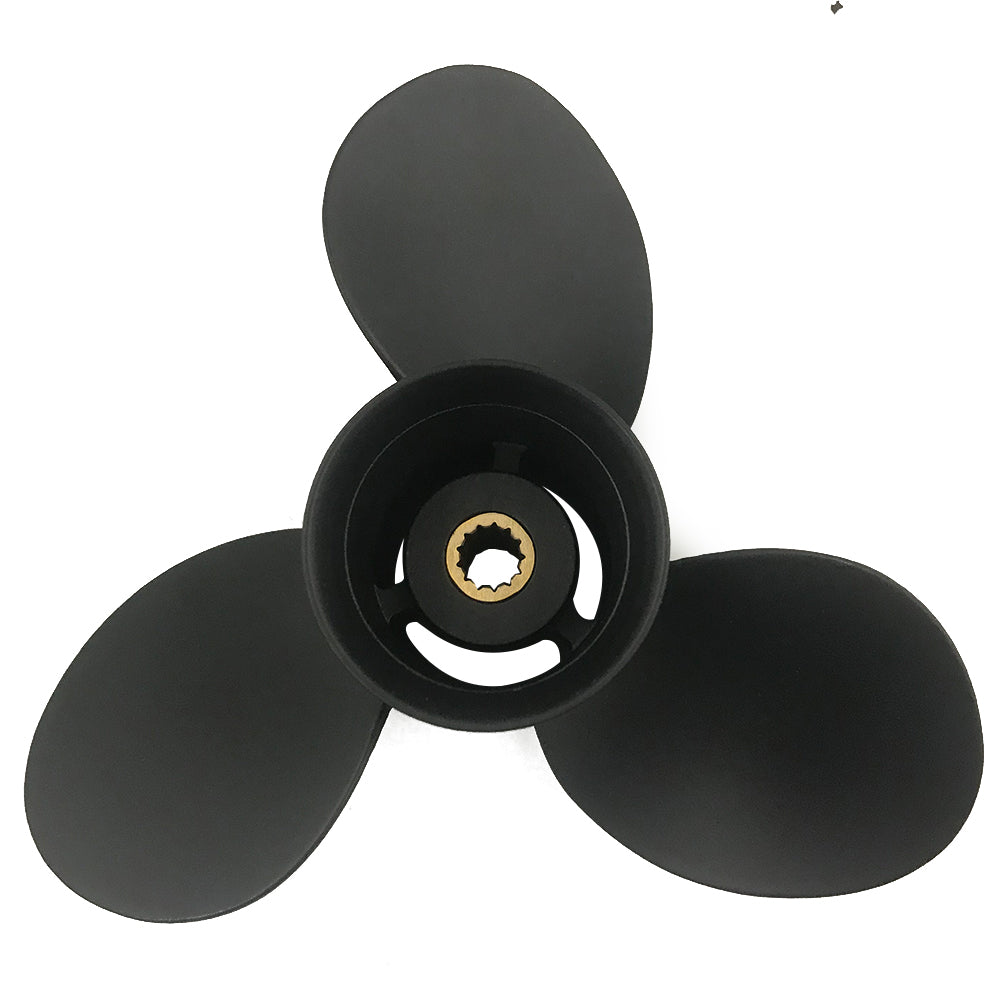Rough-water navigation is not an easy affair; it requires the right skills, experience, and mostly, the correct information to keep all parties safe. Keeping your bow against big waves and faster roaming choppy seas sometimes can put a set of roars to a life execution or a safe one. So, one wonders how to make the call on speed in this challenging setting. An elaborate explanation of the tangible factors a boater has to consider in matters of safety and stability, ranging from the vessel type to environmental conditions, is considered here. Whether an expert or a novice, this handbook presents practical and exemplary solutions to help you confidently and thoroughly engage with rough waters.
Understanding Safe Speeds for Your Boat

Defining Safe Speed for Your Vessel
Safe speed is a crucial boating concept that considers various factors to minimize risks and maintain maximum control over the situation at hand. The correct speed of a vessel depends on the boat's characteristics, such as size, weight, and maneuverability, as well as the external conditions, including weather, visibility, traffic density, and water depth. The fact that larger vessels take longer to stop or turn short emphasizes the need for an appropriate adjustment of speed in the event of danger.
Environmental factors are also crucial in the matter. Reduced visibility due to fog or heavy rain essentially demands a slower pace to allow sufficient reaction time. Similarly, navigating high-traffic waterways requires deliberate speed management to prevent collisions. Wake concerns must also be factored in, whereby the speed should not cause waves strong enough to destabilize nearby vessels or disturb certain infrastructure. When considered in conjunction with the vessel's means and with current awareness of the conditions, operators should be able to maintain safe navigation and maintain stability and control.
Importance of Safe Speed in Boating Safety
This emphasis on speed becomes essential not only for the operator's safety but also for maintaining the physical integrity of the environment and the coexistence of other users in a particular waterway. Research indicates that speed has been a major factor contributing to the occurrence of boating accidents, where the operator is often unable to respond correctly to a panicked or unforeseen obstruction in the path or a sudden change in conditions. However, if a slower speed is applied, it will allow operators ample time to view different threats to their passage, such as submerged debris, wildlife, and changes in water depth, and to respond accordingly.
Examples include slow-speed navigation through no-wake zones near docks or marinas to prevent damage caused by waves on well-moored boats and shoreline structures; thereby, repair costs and environmental damage are mitigated. Depending on the weather, varied by perhaps fog, rain, or high winds, the need to monitor and dynamically adjust speed becomes even more pronounced. Safe speed, good visibility, and sound judgment guarantee a pleasant and dignified boating experience for everyone onboard and out on the water.
Common Misconceptions About Boat Speed Limits
Many people hold the mistaken notion that boat speed limits are arbitrary or set solely to generate fines. Speed limits are established, in fact, for the most important reasons of safety, environmental protection, and maintenance of infrastructure. For instance, speed limits in no-wake zones are established to prevent shoreline erosion and disturbances to local ecosystems, thereby protecting aquatic animals and their habitats. Another common misconception is that boating speed restrictions only apply to motorized crafts. However, speed restrictions usually apply to all watercraft, including sailboats and personal watercraft (jet skis), to ensure proper and equal treatment of different kinds of watercraft.
In essence, it is probably another misconception some boaters have—that simply keeping the speed limits absolves them from being vigilant about navigation or situational awareness. Speed limits do set a legal limit; however, in reality, hazards such as underwater obstacles, sudden changes in weather, and congested areas necessitate adjustments depending on the conditions, rather than adhering strictly to those speed limits. Understanding the whys and wherefores of these rules helps make waterways safer environments for both recreational and commercial users.
Factors That Determine If a Speed Is Safe

Assessing Water Conditions
Direct knowledge of water conditions is necessary, for these make or mar the safe navigation of a vessel. Calm and clear waters often permit higher speeds; however, these boaters must also consider other factors, such as the presence of other boats, submerged obstacles, and even wildlife. Rough or choppy waters require a reduction in speed to maintain control and avoid an accident. Strong currents and big waves can shake up the handling of the boats, as can turbulence from a passing ship, so speed adjustments are part of the game. For instance, Vehicle control may be improved and passenger and cargo comfort increased by reducing speed when in swells and big waves.
Environmental factors, unpredictability in water, and a constant vigilance for any mariner can become a challenge in themselves. For example, rainfall can decrease visibility to a certain degree and cause currents that are unseen by boats. Thus, much caution is warranted in areas susceptible to sudden changes in weather or tides. Mariners should look at tide charts, wind forecasts, and advisories from local maritime authorities. Small changes in temperature or wind direction near the coast can disrupt establishment conditions without warning. In contrast, an understanding of the underwater terrain that affects local water behavior, such as sandbars that surface during low tides and deep sections or channels where currents are strongest, will ensure safer travel. Changing speed and navigational tactics, considering the conditions at hand, will lead to safer waters for a boater and others sharing the waterways.
Assessing Wind and Water Conditions
In assessing wind and water conditions, modern tools and cutting-edge meteorological data provide a significant advantage to boaters. The accurate forecast of wind speed and direction, when combined with tide and current analysis, paints a complete picture of the environment. For instance, wind speeds greater than 20 knots may set up waves that test one's nerves, while the strong opposing current can cause steep and chop-like conditions when channel widths constrict. Even water temperature variation can be tracked to pick out indicators such as the upwelling zone that may affect a local ecosystem or change the sea state. Regular reference to detailed weather charts or tracking platforms will enable a little more planning in picking the perfect routes and timings for smooth and safe navigation.
Visibility and Impact on Safe Boat Operation
Visibility, a paramount consideration in boating safety, renders the occurrence of accidents or navigational errors possible whenever the range is limited. Fog, torrential rains, and sometimes even the glare of the sun may act as barriers to a boater while attempting to spot landmarks, other vessels, or hazards in the water. According to reports from international maritime safety authorities, restricted visibility is among the most significant causes of boating casualties, highlighting the necessity of being well-equipped for it.
Herein lies the need for advanced technology, such as radar systems or GPS chart plotters, in assisting boaters with situational awareness when visibility is poor. Radar can be used to identify nearby vessels or obstacles, while GPS can pinpoint exact coordinates, allowing the boater's position to be monitored and thereby reducing the chance of drifting off course. Provide high-quality navigational lights and sound signals for your boat, ensuring you remain visible to others at night or in busy waterways.
To mitigate such risks, this involves, among other things, checking the weather forecasts and visibility-related warnings before setting off. Providing the vessels with suitable navigation aids and having a clear understanding of maritime safety guidelines will aid significantly in decision-making, even in the most extreme weather conditions. With all the hazards that limited visibility can pose, one can reduce that by proper planning and equipping, and a safer journey will result from the water-borne side.
How to Check to Decide If a Speed is Safe

Instruments and Tools for Monitoring Boat Speed
Accurately monitoring a boat's speed is crucial for safety, adhering to navigational rules, and optimizing fuel efficiency. Several instruments and tools are available to help boaters determine the speed of their boat.
A commonly used device is a GPS speedometer, which provides real-time speed measurements based on satellite data. These are very dependable and often come with built-in navigational systems for added convenience. Another excellent tool is the pitot tube sensor, which measures wave pressure flowing through the tube and converts it to speed. At low speeds, it is not very accurate, but it performs well at high speeds.
Multifunctional marine displays are highly valued by those who require multiple capabilities. These systems are capable of speed monitoring and also provide information on navigation, depth, and weather, all in one interface. These apps connected to onboard systems may be secondary tools offering speed metrics and trip planning.
The boater must weigh the ease of installation and use, the measure of accuracy, compatibility, and the specific need for the boat of choice. These instruments must be frequently calibrated and maintained to enhance their accuracy and remain reliable over time. By combining technology and maintenance, one can monitor speed with utmost confidence and work toward improving the overall boating experience.
Using Local Guidelines and Regulations
Compliance with boat regulations ensures safety and operational efficiency on the water. These rules are subject to regional considerations and include canvassing different speed limits, restricted zones where the operation of vessels is prohibited or restricted, compulsory safety gears, and operational practices specific to different vessel categories. For example, some jurisdictions may require boats to display navigation lights at night or impose reduced speed limits in areas where wildlife activity is high. Hence, by inculcating these requirements, boaters can avoid likely fines and contribute to conserving the environment as well as ensuring the safety of every person aboard, as well as those on the waters nearby.
Moreover, these local regulatory bodies typically maintain up-to-date resources containing details about waterway conditions, seasonal restrictions, and instructions for responding to emergency situations. By using this information, the boater can efficiently plan his routes and foresee possible issues that may arise, adjusting as needed due to changes in weather conditions or higher traffic levels within certain populated areas. Besides, remaining alert to any announcements of new updates or amendments to regulations that can alter the basis of operation is essential. Thus, a combination of local rules clarity, smart planning, and alertness will contribute to a pleasant boating experience while bearing some degree of responsibility towards the communities they traverse.
Regular Checks Before Departure
A safe and smooth passage begins with a thorough pre-departure check. Check the vessel for any visible signs of damage or wear, especially the hull, propellers, and engine components. Ensure that life jackets, fire extinguishers, and other essential equipment, such as distress signals, are present and in good working condition. Check navigation lights, radio communications, and other electronic systems to ensure they are functioning correctly. Check fuel levels as well, and ensure they are adequate for the intended route, with some margin for unexpected delays or detours.
Stay updated on the weather and tide conditions, as well as any currents so that adjustments can be made to the plan accordingly. Reviewing navigational charts and verifying an intended route can help reduce the risk of any issues, especially in uncharted waters. Record such checks as part of a routine; this acts as a safeguard to avoid any lapse in attention and to ensure a thorough preparation for any boating outing. Pre-departure inspections, conducted proactively in a systematic manner, provide a guarantee of safety and compliance with maritime regulations.
Operating Your Vessel at a Safe Speed

Techniques for Maintaining Control of Your Boat
In any situation, maintaining control of your vessel ultimately depends on skill, awareness, and safe practices. Learn how speed, your environment, and hazards interplay with each other. Safe speeds enable you to quickly react to obstacles that come into view, while ensuring that your passengers and other nearby vessels are safely out of harm's way.
Directions of the steering must be done very smoothly and evenly. Avoid sudden movements and practices that can create an imbalanced calm effect, as you want the forward-moving vessel to respond appropriately and nicely to steering. Considering the changes in winds, currents, and tides will assist in achieving better control, as these factors have a major impact on your maneuverability.
Work regularly on Inspections and Maintenance of Your Steering and Propulsion Systems to Prevent Mechanical Breakdown. Add an Extra Touch of Precision by Using GPS-based Navigation Systems That Allow You to Plot Courses and Stay Informed About Restricted Zones or Underwater Hazards. At Last, Remain Alert, Keep Scanning the Horizon, and Communicate with Your Crew to Maintain Excellent Control in Any Situation.
Ways You Are Probably Running at Unsafe Speeds
Running at an unsafe speed is an accident waiting to happen; hence, it is essential to ensure your speed is safe. Some of the signs that could point to unsafe speed are:
Difficulty in Maintaining Control: When the steering becomes less responsive or the vessel maneuvers sluggishly, it may be a sign that your speed is high for the current conditions. This impairs your ability to react to obstacles or sudden changes in your environment.
Wake Make-and-Excess: Creating a wake larger than usual could come into conflict with other vessels, might erode shorelines, or even be harmful to wildlife. The bigger-than-normal wake is a loud and clear signal that you may be going too fast for that area.
Bad Visibility Handling: You may sometimes find yourself at risk, and others too, when high speeds limit your ability to operate safely under reduced visibility during instances of fog, rain, or darkness. The choice is to be at a speed that allows you to have proper time for reaction in these situations.
Unstable or Skimming Behavior: Excessive speed typically produces the sensation of instability, characterized by the skipping of the vessel across waves and difficulty sustaining a smooth movement. These effects, especially in rough waters, increase the chances of either capsizing or losing control.
Limited Reaction Time: Speed that reduces a person's ability to correctly assess his or her surroundings and react appropriately to oncoming vessels, swimmers, or debris is unsafe. Operators should always ensure that there is sufficient time to observe a potential hazard and make necessary adjustments.
Exceeding Area Speed Limits: Many waterways have speed limits established with different considerations, such as water traffic, closeness to harbors, or ecological protection zones. Hence, disobeying these could mean being unsafe and is outside of the bounds of the law. Penalties or fines may even be levied against the operator.
By keeping an eye out for these warning signs and adjusting one's speed appropriately, one can ensure that their safety is paramount, along with a safe and easy experience.
Adjusting Speed According to Environmental Conditions
Adjusting your speed to match environmental conditions is vital for maintaining safety and enjoying a good time on the water. Weather, visibility, and wildlife around you are all factors that tap into how you might want to operate. For example, decreasing speed under heavy rainfall or harsh winds is a good idea, as it will give you more control of your craft in several scenarios and reduce the likelihood of an unfortunate accident in others. Similarly, low-visibility areas, such as those cloaked by fog or shrouded by nighttime coverings, would dictate a speed reduction to provide the necessary response time to an unforeseen obstacle, either on the path of your vessel or another vessel.
When discussing wildlife or environmentally sensitive areas, take the necessary steps to keep your vessel's operation at a slow pace. This is to protect the habitats of these areas and prevent harm to animals that may be in their proximity or just below the water. If not in those areas, then in your busiest waterways, many speed adjustments will need to be carefully considered to avoid any untoward accidents, ensuring that everybody aboard and nearby remains safe.
If alert and moving at an appropriate speed in response to changes in environmental conditions, a safer environment will be provided to everyone, thus ensuring the sustainable use of natural waterways.
Avoiding Collisions by Determining a Safe Speed

Understanding Collision Regulations
Understanding the collision regulations is vital for safety and for ensuring compliance on waterways. I view this as a personal responsibility, with a strong emphasis on maintaining a safe speed and being aware of the immediate environment. I have always adhered to the "Rules of the Road" for navigating ships, placing primary emphasis on avoiding possible collisions through positive and pre-emptive decision-making and constant vigilance. This set of rules-warships crossing, proper signaling using sound signals and light signals, lookout duties- is my guiding light on the water.
The factors I consider when calculating the proper speed to navigate through an accident are visibility, traffic density, and maneuverability of my vessel. For example, when visibility is limited, such as at night or during thick fog, I would reduce speed until I am sure I can react adequately to unexpected obstacles. Additionally, the potential for accidents increases, so I reduce my speed to better control my vessel while navigating through busy waterways. By understanding and applying such ways, I stay out of consideration in maritime law and consider the other brethren in the waterway.
By following these Principles of Navigation, coupled with vigilance and good judgment, I aim to avert accidents and ensure the safety of all parties involved. Keeping myself informed about collision regulations and tailoring my actions to the circumstances makes me all the more confident as a boater and contributes to building a safer and more responsible boating community. These ensure that I am well placed to face any challenge that comes up on the water.
How Speed Influences Reaction Time
The speed directly diminishes reaction time, thus decreasing the period of hazard assessment and response. I have found that when everything happens quickly due to speed, I have less time to absorb information and make constructive decisions. For example, in a matter of seconds, an obstacle must be identified, the optimal steps to avoid it must be calculated, and the maneuver must be executed; the faster the vehicle moves, the more challenging it becomes to perform these actions with conscious thought. Thus, I deliberately try to drive slower when the environment poses a risk, visibility may be reduced, or in the presence of heavy traffic, so as to maintain a respectable reaction time.
A higher speed means a vehicle covers more physical distance in less time. This has severe consequences for delayed reactions: even a moment's distraction or a few seconds' delay in decision-making can lead to critical outcomes. When I keep to a safe speed, especially in congested or unpredictable situations where an intermittent hazard can suddenly arise, I give myself the best chance to calmly and confidently respond should the need arise.
I have learned that speed is managed not just to conform to the law, but also to ensure that everyone involved is safer. By taking stock of my reaction speed, I strive to remain in control, thereby eliminating avoidable risks and promoting a safe and responsible environment—whether on water or on the road.
Strategies for Collision Avoidance in Rough Waters
When going through rough waters, from my experience, preparation and awareness are key factors in avoiding collisions. One thing I never fail to do is to assess weather conditions from current forecasts before heading out. If I know there will be changes in wind or currents that will affect visibility, I can then prepare better for the challenges and steer on a safer path. It is paramount to remain vigilant, even while on the water; I keep a close eye on the horizon in all directions for any hazards, other vessels, or sudden changes in water conditions. Such situational awareness enables me to make complete decisions and change my instincts accordingly.
In another approach, I ensure practical work with technology and safety equipment. Radar, GPS, and depth-sounding instruments provide critical information, especially when it is dark or the water conditions are rough. Communication via VHF radio with vessels in the vicinity helps me convey my position and receive warnings from others. With these acts, I'm confident that I can coordinate with other watercraft more effectively and avoid any unintentional collisions.
Lastly, speed and maneuvering alterations are the last thing I do, depending upon the working conditions. Reduced speed in turbulent waters improves control in tight situations. I make sure to keep clear of the traffic, even in tricky environments, respecting navigation regulations and channels. Through effective route planning, the proper use of technology, and adherence to navigation best practices, I ensure safety while minimizing risk when navigating through rough waters.
Reference Sources
-
What Is a Safe Speed? - Boat Ed
Discusses factors such as visibility, traffic density, and vessel maneuverability in determining safe speeds. -
Safe Speed - Boater Exam
Highlights key considerations, including visibility conditions, wind, and water factors, for safe boating speeds. -
What Determines If a Speed Is Safe for Your Boat - Trident Marine
Explores elements like wind, water conditions, vessel type, and local laws affecting safe speeds. -
What Should You Check to Decide If a Speed Is Safe - Brainly
Emphasizes checking wind, water conditions, and the vessel's capacity plate for safe operation. -
What Should You Check to Decide If a Speed Is Safe - Brainly
Covers conditions, obstacles, visibility, and boat specifications as critical factors for safe speed decisions.
Frequently Asked Questions (FAQs)
What determines safe speeds for a boat?
There are many factors that contribute to determining a safe speed for your vessel. You should also consider local regulations, as well as speed limits posted in some areas, for the safe navigation of vessels. Also, consider weather conditions—wind speed and wind direction —to vary the vessel's handling. Navigational hazards are another concern, such as rocks or buoys, which may require a change in speed. Additionally, consider water conditions: wave height, on the other hand, may affect boat stability. As a final factor, boat traffic may create a situation where the vessel must be operated at a speed that allows for maneuverability and sufficient stopping distance.
How Would One Go About Checking-Who Will Decide if a Speed Is Safe for His Boat?
Speed determination requires an in-depth analysis of several key elements related to a vessel. Begin by checking local speed limits and regulations to ensure compliance with safety guidelines for boat operations. Then, consider weather conditions, especially wind speed and wave height, since these two factors directly affect your boat's speed and handling. Furthermore, check visibility in the area, as poor visibility will definitely require you to slow down to remain in control. Vessel traffic should also be tracked to avoid collisions while navigating in close proximity to other boats. Finally, consider your experience operating boats and your comfort level with the chosen boat to ensure a relatively safe and comfortable voyage.
What Do You Specifically Have to Consider While Operating Your Vessel?
Several factors contribute to determining a safe speed for your boat. First, consider wind and water conditions-a rough sea would affect the speed and stability of your boat. Then there is the speed of the ship itself and the traffic around it. Consider all these parameters, including the local laws, to know the maximum allowed speed and areas where boat wakes are prohibited. Additionally, another crucial consideration is the operator's experience. Less experienced operators should maintain slower speeds than those deemed safe for more experienced operators. Life jackets must be worn at all times by both the operator and passengers to ensure safe boating.
Do Visibility Conditions Influence the Safe Speed for Your Boat?
Visibility is a paramount factor in determining the safe speed of a vessel. Fog, rain, darkness, or any other adverse weather conditions are all factors that can limit one's ability to observe navigational hazards; therefore, a decreased speed would be appropriate. When the visibility is less than favorable, the speed should be adjusted accordingly to provide the master with adequate control and reaction time. It would also be wise to increase vigilance regarding other vessels, as they may be harder to detect. Consider using an additional navigational instrument, such as GPS or radar, to further enhance your navigation safety. A conscious decision to prioritize visibility can thus prevent unfortunate events and give pleasant boating experiences.
What Is A Safe Speed for Your Vessel?
There are several reasons why you will want to operate a vessel at a safe speed. It allows for control, particularly when maneuvering through congested areas with heavy traffic. The risk of accidents and incidents of damage to the boats can at least be minimized by operating at a safe speed. Additional local speed limits are implemented to ensure the collective safety of the entire boating community. It enables you to respond swiftly to unexpected situations, such as a sudden change in weather or a newly discovered navigational hazard. Ultimately, maintaining a safe speed brings about joy and safety during the boating experience.
How Do Professional Winds and Water Dynamics Affect Boat Speed?
Wind and water conditions are significant determinants for achieving high speed by a boat. Higher winds churn up choppy waves, making it untenable to negotiate the ship at increased speeds. Keeping speed in check in such circumstances is advisable, with consideration of wind direction for one's course. Besides this, various water conditions also alter boat speed and concern one's careful navigation. Understanding how to interpret these environmental factors is crucial for safe navigation and the prevention of boat accidents. Understanding wind and water conditions will undoubtedly aid in safe and enjoyable boating experiences, while also enabling effective speed control for your boat.
What Safe Boating Practices Can Ensure a Safe and Enjoyable Experience?
Safe boating will provide you with an excellent water experience. First of all, wear life jackets and see that there are also life jackets for the boaters: they are a must for safety. Learn all the local laws of boating, whether they include speed limits or no wake zones, so that you stay safe from any kind of penalty. Check the weather conditions that accompany the plan for any changes that may occur during the trip. Furthermore, avoid getting too close to another boat or navigational hazard to steer clear of a collision. Last but not least, ensure your boat is equipped with the correct safety gear, including flares, a first aid kit, and a communication device, to prepare for any emergency that may arise.
